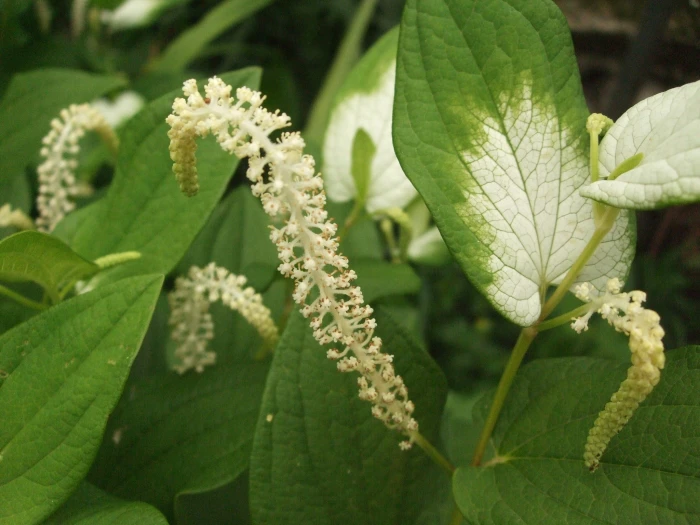Asian Lizard’s Tail
(Saururus chinensis)
Asian Lizard’s Tail (Saururus chinensis)
/
/

石川 Shihchuan
CC BY-SA 2.0
Image By:
石川 Shihchuan
Recorded By:
Copyright:
CC BY-SA 2.0
Copyright Notice:
Photo by: 石川 Shihchuan | License Type: CC BY-SA 2.0 | License URL: https://creativecommons.org/licenses/by-sa/2.0/ | Uploader: 石川 Shihchuan | Publisher: Flickr |













Estimated Native Range
Climate Requirements for Eugene, Oregon
| This Plant | Your Site | Plant Suitability for Your Location | ||
|---|---|---|---|---|
| • Precipitation | 72" - 96" | 50" | Aquatic | Aquatic |
| • High Temp. | 83°F - 91°F | 83°F | Your summer temperatures are normal for this plant. | Excellent |
| • Low Temp. | 29°F - 53°F | 34°F | Your winter temperatures are normal for this plant | Excellent |
This plant should grow well at your location with about N inches per year (Y minutes per month) of irrigation.
Summary
Saururus chinensis, commonly known as Asian Lizard’s Tail, is a deciduous perennial herb native to marshy areas, wetlands, and along the edges of streams and ponds in East Asia and Southeast Asia. It typically grows to heights exceeding 1 meter and is characterized by its green, papery, ribbed, densely glandular leaves that are ovate to ovate-lanceolate, measuring (4-)10-20 × (2-)5-10 cm. The plant is notable for its unique flower spikes, which curve gracefully, resembling a lizard’s tail, and bloom in the summer months. These flowers are not particularly showy but add an interesting textural element to water gardens.
Asian Lizard’s Tail is valued for its ability to thrive in wet conditions and is often used in water gardens, bog gardens, and for naturalizing in damp areas. It prefers full sun to part shade and requires high amounts of water, often growing well in soils that are consistently moist or even have standing water. It is relatively low maintenance but may spread aggressively in ideal conditions. Gardeners should be aware of its potential to become invasive in some regions outside its native range.CC BY-SA 4.0
Asian Lizard’s Tail is valued for its ability to thrive in wet conditions and is often used in water gardens, bog gardens, and for naturalizing in damp areas. It prefers full sun to part shade and requires high amounts of water, often growing well in soils that are consistently moist or even have standing water. It is relatively low maintenance but may spread aggressively in ideal conditions. Gardeners should be aware of its potential to become invasive in some regions outside its native range.CC BY-SA 4.0
Plant Description
- Plant Type: Herb
- Height: 1-3 feet
- Width: 1-3 feet
- Growth Rate: Moderate
- Flower Color: White
- Flowering Season: Summer
- Leaf Retention: Deciduous
Growth Requirements
- Sun: Full Sun, Part Shade
- Water: High
- Drainage: Standing, Slow, Medium
Common Uses
Deer Resistant, Fragrant, Low Maintenance, Potted Plant, Rabbit Resistant, Salt Tolerant, Water Garden
Natural Habitat
Marshy areas, wetlands, and along the edges of streams and ponds in East Asia and Southeast Asia
Other Names
Common Names: Lizard’s Tail, Kinesisk Ödlesvans, 삼백초, San Bai Cao, 三白草
Scientific Names: Saururus chinensis, Saururus loureiri, Saururus loureiroi, Saururus cavaleriei, Saururopsis chinensis, Saururopsis cumingii, Saururus cumingii, Spathium chinense
GBIF Accepted Name: Saururus chinensis (Lour.) Baill.